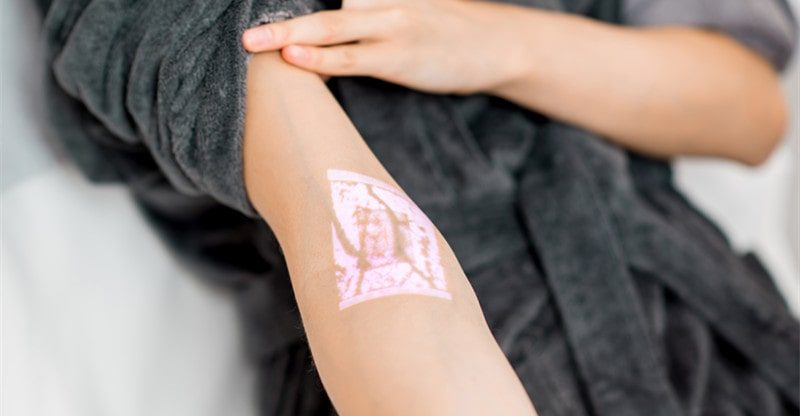When Vein Finder Is Required?
Have you ever had blood drawn and felt like the phlebotomist was poking around for an eternity before finally finding a vein? Or, maybe you’ve had an IV started, only to have the nurse attempt several times before finally hitting the mark. If so, you may have wondered if there was some sort of device that could help locate veins. Well, there is! It’s called a vein finder.
Vein finders are devices that use either infrared light or ultrasound to locate veins beneath the skin’s surface. They can be used to help with starting IVs, drawing blood, or administering injections. Here, we’ll discuss when you might need a vein finder and how they work.
What is a Vein Finder?
A vein finder is a device that uses infrared light to illuminate veins so that they can be more easily seen. Vein finders can be handheld or floor-standing, and they typically have a display screen that shows the location of veins. Some vein finders also have audio or visual alarms that go off when a vein is found. And If you don’t know which vein finder is good for you, you can check out Aimvein Go 2.0 too, and see if it fits your need.
How Does a Vein Finder Work?
Vein finders work by using either infrared light or ultrasound waves to create an image of the veins beneath the skin’s surface. The former of which is used the most. The image is then displayed on a screen so that the user can see where the veins are located.
Vein Finders that Use NIR Light
Some vein finders use infrared light to create an image of the veins. This type of device shines a beam of light onto the skin and then uses sensors to detect how much light is being absorbed by the tissues. The amount of absorption varies depending on the tissue type; since veins contain less hemoglobin than other tissues, they absorb less light and appear darker in the image.
Vein Finders that Use Ultrasound Waves
Other vein finders use ultrasound waves to create an image of the veins. These devices emit sound waves that bounce off of tissues and then return to the device. The device uses sensors to detect how long it takes for the sound waves to return; since veins contain more fluid than other tissues, they reflect sound waves more quickly and appear brighter on the image.
When Do You Need a Vein Finder?
There are many events and circumstances when you might need a vein finder.
When You Skin is Dark or Pigmented
If you have dark skin, it can be difficult for medical professionals to see your veins. This is because darker skin absorbs more light than lighter skin. As a result, veins can appear to be darker in people with dark skin.
This makes it difficult to see them, even when using traditional methods such as palpation (feeling for veins with your fingers). This is where you might need to use a vein finder as they can locate the vein even under the most tanned and dark skin.
When You are Too Overweight
Vein finders can also be helpful for people who are overweight. This is because fat tissue absorbs more light than other tissues. As a result, veins can be more difficult to see in people who are overweight. In addition, the added tissue can make it difficult to feel veins with your fingers.
When Your Veins are Too Small or Thin
Finally, vein finders can be helpful for people who have small or delicate veins. This includes infants and children, as well as adults with small or fragile veins. In these cases, traditional methods such as palpation may not be possible or may not be effective.
Other Possible Uses for Vein Finders Than Finding Veins
Apart from the above discussed, there are some other times when you might need a vein finder
Spotting Skin Cancer
In addition to its traditional use in healthcare settings, recent studies have shown that vein finders can also be used to detect skin cancer. When used in conjunction with dermatoscopes, vein finders can help doctors identify early-stage melanoma and other types of skin cancer.
The reason vein finders are so effective at spotting skin cancer is that they can see beneath the surface of the skin. This allows them to identify abnormal blood vessels that may be associated with skin cancer. If you’re concerned about your risk of skin cancer, talk to your doctor about whether using a vein finder during your next appointment might be right for you.
Checking for Blood Clots
Vein finders can also be used to check for blood clots. Blood clots are a serious medical condition that occurs when blood thickens and clumps together. If left untreated, blood clots can cause stroke, heart attack, and even death.
Doctors can use vein finders to check for blood clots by looking for changes in the appearance of veins. Blood clots often cause veins to become twisted or enlarged, and a vein finder can help doctors spot these changes. If you’re at risk for blood clots, your doctor may use a vein finder during your next appointment to check for any changes in your veins.
Conclusion
Vein finders are small, handheld devices that emit infrared light to locate veins beneath the surface of the skin. They are commonly used by healthcare professionals to identify veins for blood draws or IV therapy but have many other potential uses as well.
For example, recent studies have shown that vein finders can also be used to detect early-stage melanoma and other types of skin cancer. Additionally, doctors can use them to check for blood clots by looking for changes in the appearance of veins.
If you’re concerned about your risk of skin cancer or blood clots, talk to your doctor about whether using a vein finder during your next appointment might be right for you. We hope that this article has helped you learn more about when a vein finder might be required and some of its other potential uses. If you’re interested in learning more, talk to your doctor today.



